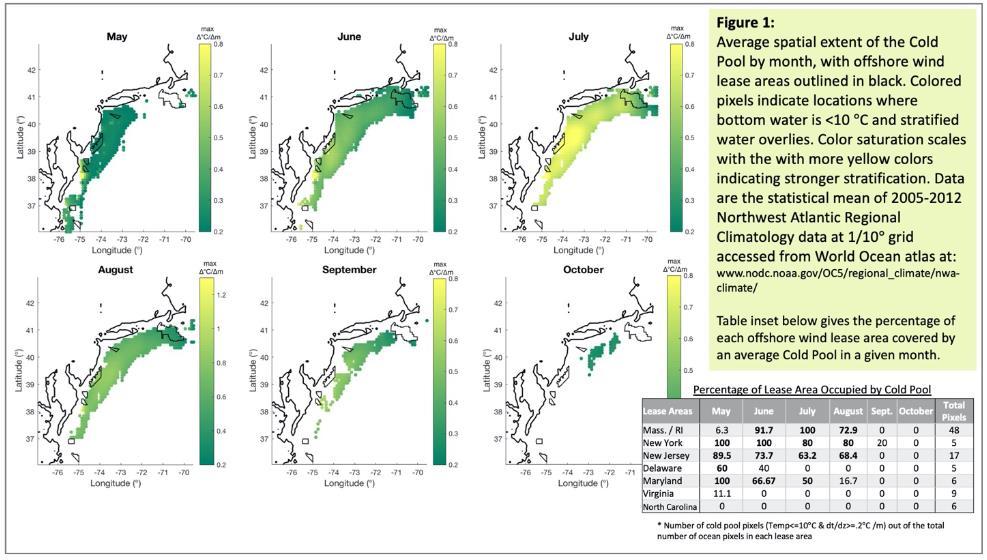
3 minute read
Guest Commentary Windfarms & the Cold Pool
Guest Commentary
By SCEMFIS Science Center for Marine Fisheries
Advertisement
Little Known on How Wind Farms Affect Critical Mid-Atlantic Ocean Feature

Scientists fear the placement and density of windfarms proposed for the US East Coast could negatively impact the Cold Pool, a critical ocean circulatory system, and the fisheries dependent upon its seasonal formation and dissipation.
January 28, 2021–While not often in the spotlight, an oceanographic feature known as the “cold pool,” which stretches from Massachusetts to North Carolina, is critical for the health of many marine species. However, a new study from the Science Center for Marine Fisheries finds that, despite its importance, not much is known about how the growing offshore wind industry could affect the cold pool, and the marine life that depends on it. The study, from Dr. Travis Miles, Sarah Murphy, Dr. Josh Kohut, Sarah Bosetti, and Dr. Daphne Munroe, all of Rutgers University, reviewed existing literature on how wind farm construction affects ocean environments in Europe, where most offshore wind farm construction has so far taken place, and lays out what can be learned from the European experience, and what aspects about

potential interactions remains unknown. Spanning much of the Mid-Atlantic Bight, the cold pool is a layer of cold water just beneath warm surface water, extending to the ocean bottom that forms every spring and lasts until the fall. Its annual appearance is a vital part of the life cycle of many marine species. “It supports some of the most lucrative fisheries in the world, some of the most sustainably managed fisheries in the world,” said Dr. Munroe. “We’ve got species that live off the coast of New Jersey that you wouldn’t expect to live here because they need cold water. And it’s that cold pool that provides that habitat that allows them to live here.”
According to the study, Europe’s experience with wind farms has shown that there is some impact from the placement of wind turbines. Specifically, the study states, “turbines induce downstream impacts on ocean velocities, turbulence, and stratification. ” However, the extent of this interference is highly dependent on the site, the size of the wind farm and turbines, and underlying ocean conditions and wind speed. It is not clear how much the European experience will translate to the Mid-Atlantic.
With the cold pool, the waters of the Mid-Atlantic are much more clearly stratified between layers of warm and cold water, and tidal currents are generally weaker than those in Northern Europe. Those two factors may affect whether or not wind turbines disrupt the cold pool and the ocean stratification that is an essential feature for the region’s marine life. “Understanding how fast the ocean moves in our region relative to how fast the ocean moves in
other regions where some of this research is done is super critical,” said Dr. Miles. “Tides in Europe move very fast. In the Mid-Atlantic region we have relatively slow currents unless we have storms come through.” The study’s authors specifically identify three areas that will require future study: the level of overlap between the cold pool and the areas currently being considered for offshore wind development; the threshold of stratification that will be affected by offshore wind turbines; and how development will impact the seasonal development of the cold pool. “We understand a bit about the cold pool, we understand a little bit about how offshore wind has impacted seasonal stratification off the European coast, but we don’t know what will happen when wind farms are deployed off the MidAtlantic coast in the specific conditions of the cold pool,” said Dr. Kohut.
A Video Introduction to the Cold Pool

Courtesy SCEMFIS and Rutgers University
To read the full scientific review by Rutgers scientists on the subject click the link below.









